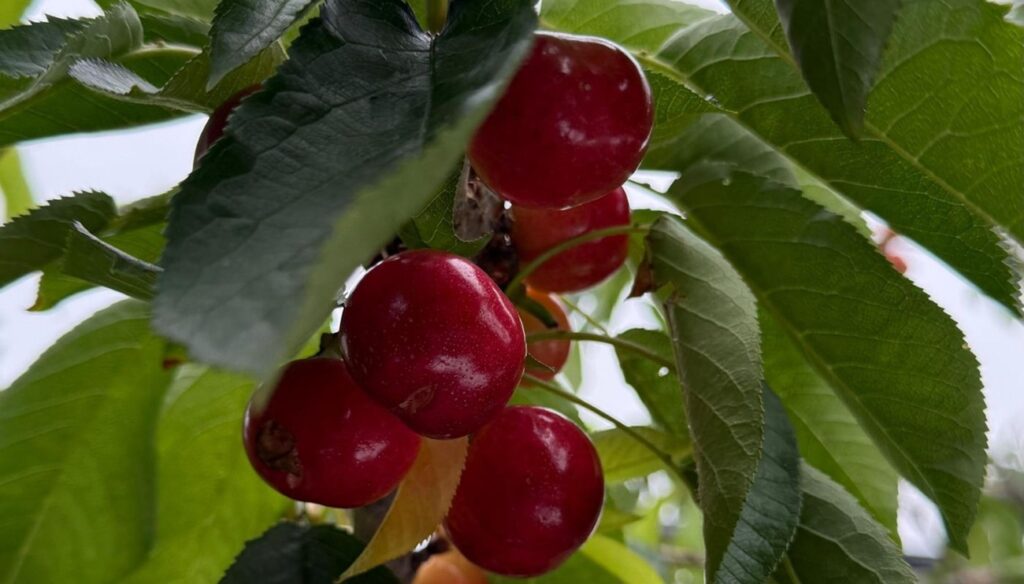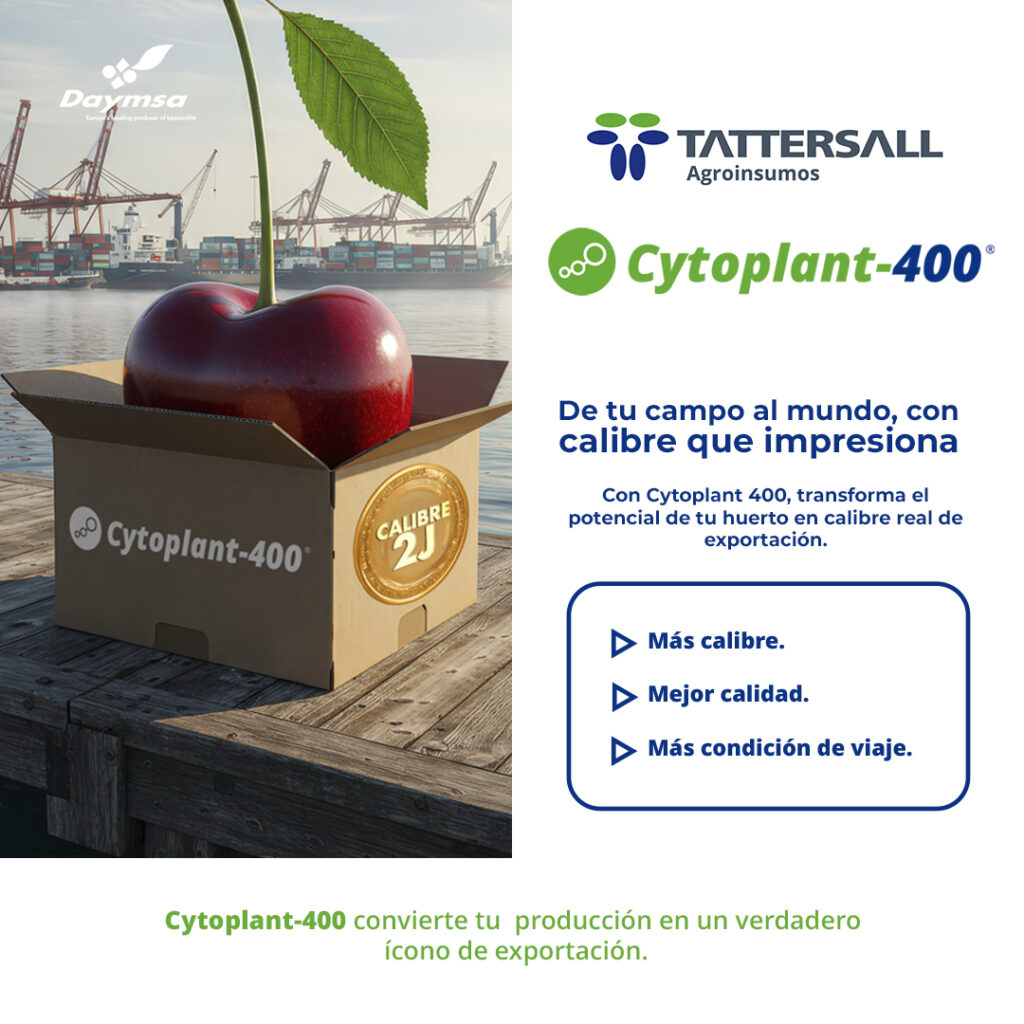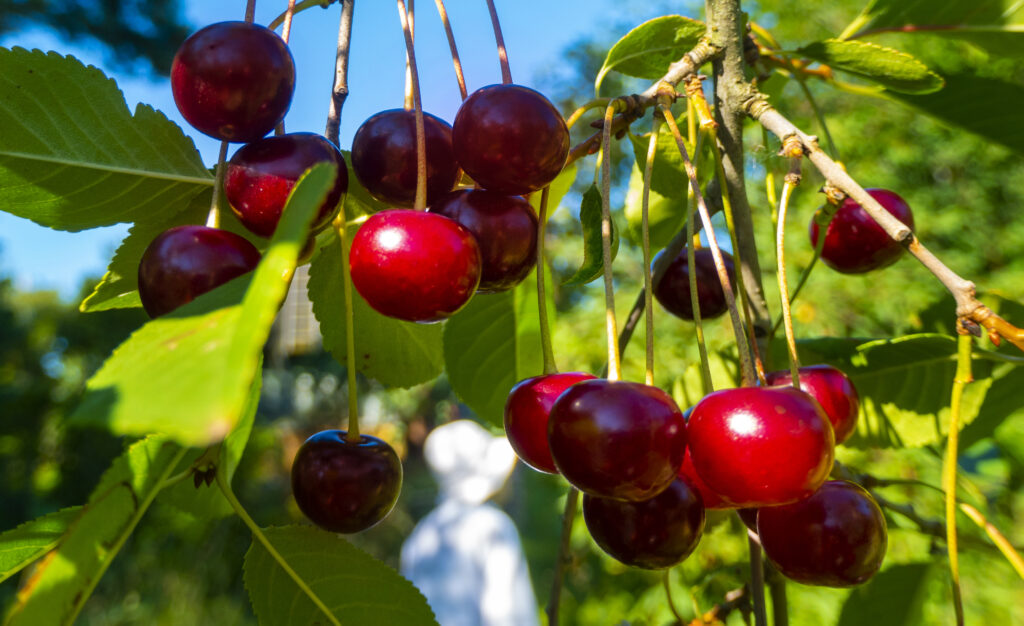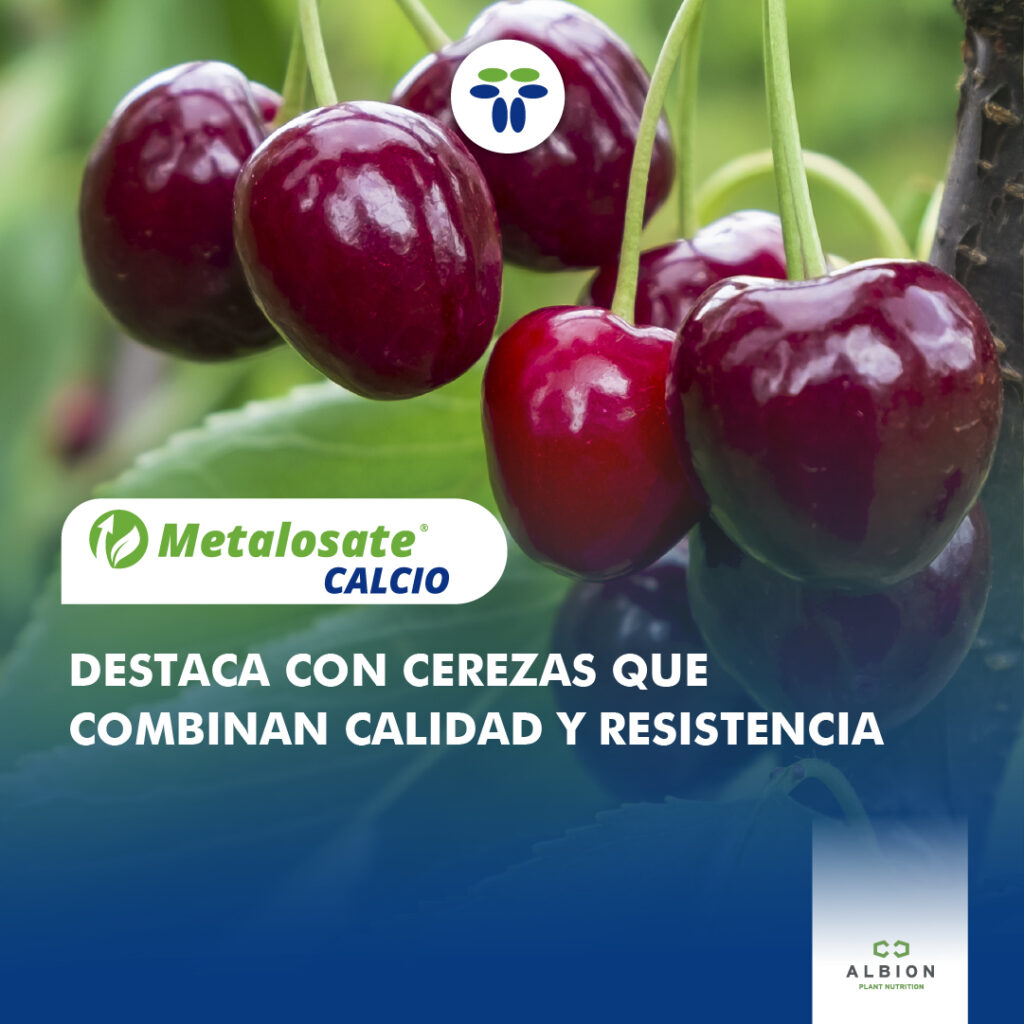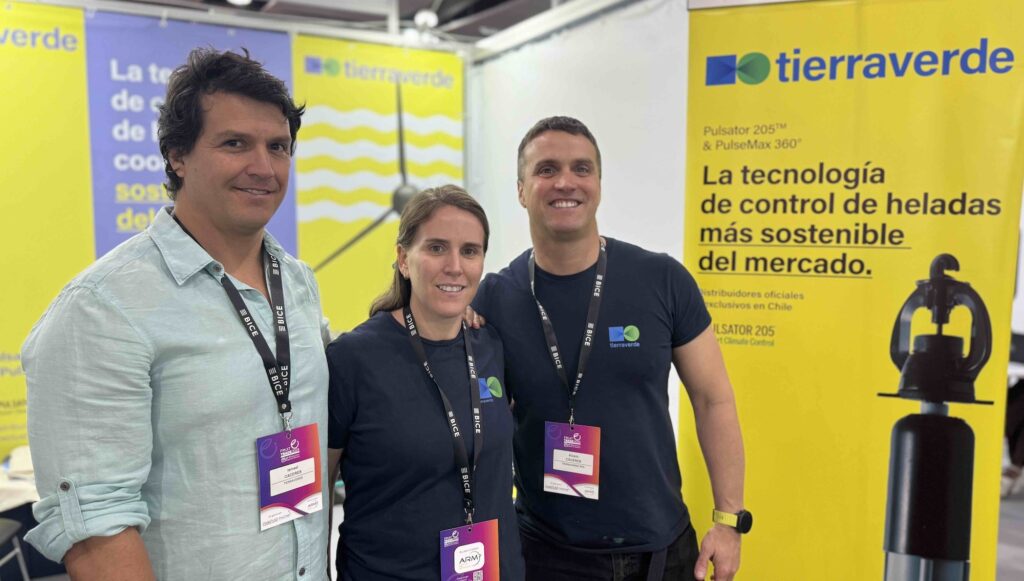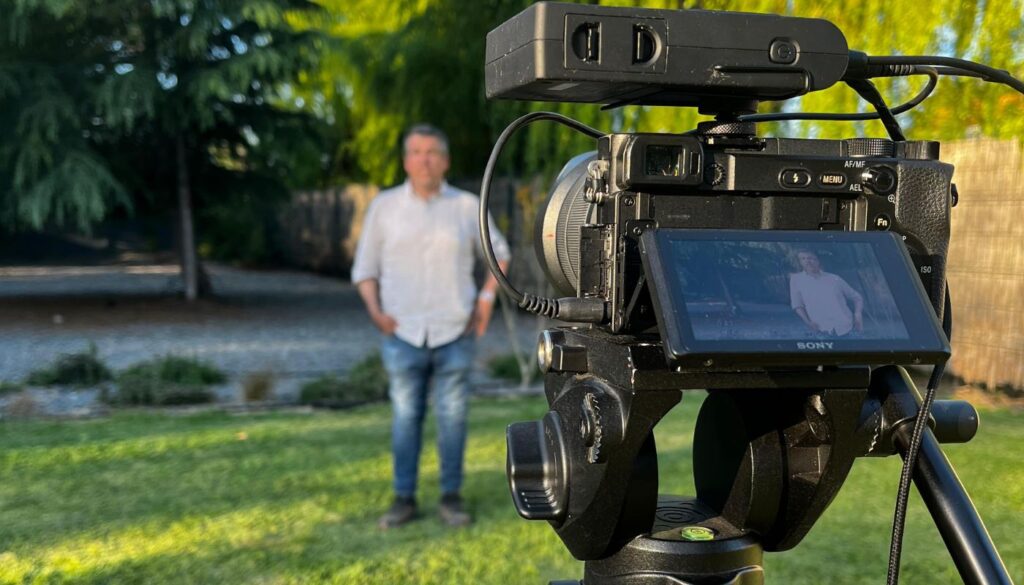
- YoResearch carried out in Chile on the correct use of sunscreen has been able to prove its usefulness in dealing with the risks of water stress in the face of high summer temperatures.
- Its application should be carried out immediately after harvest, and repeated 25 to 30 days later to prevent the high temperatures of January and February from affecting its correct development.
Immediately after the harvest is over, the cherry season really begins. It is during the post-harvest period that very important processes for the optimal reproductive development of the plant occur, such as flower induction, flower differentiation and root system recovery. But there is a great risk that crops face during this time, which is dehydration due to the effects of high temperatures.
The gas exchange in fruit plants is directly related to the transport of water from the soil to the atmosphere. If this process is continuous, everything that the plant takes as water from the soil is transported via xylem ducts or vascular bundles to the atmosphere by releasing water through structures located in the leaf called stomata. When these stomata are open, they have the perfect balance of releasing water into the atmosphere to complete their water cycle and in turn, in that same process, they capture CO2 from the atmosphere and enter the plant to be transformed into sugars, through physiological cycles. This carbon is a main part of plant nutrition and is a “free nutrition”, in which the plant has to capture it, and is mainly related to the management that producers carry out in the orchards to avoid thermal water stress. If this thermal water stress is triggered, there is no longer a continuous flow of water from the soil to the atmosphere, therefore, the uptake of water by the plant is limited and in turn stomatal closure is imminent. If stomatal closure occurs, there is also no release of water into the atmosphere or uptake of CO2 Therefore, the plant and all its physiological processes will be carried out with an inadequate body temperature and carbon uptake will be separated as an important source of reserve accumulation.
If the plant enters an environment with non-optimal temperatures, it is detrimentally contributing to the fact that its most important physiological processes for the formation of its reproductive structures for the following season, such as the induction and differentiation of floral primordia, are not ideal (considering that they are often the basis for the creation of malformations in the fruits, such as double fruits).
“What we have seen constantly in our research associated with the use of sunscreens in cherry trees is that there are consistently marked and important differences in the accumulation of starch as the main carbon reserve in saplings. Although we have measured fruit centers and roots, the great difference in accumulation or greater accumulation of starch with sunscreens vs. the control is seen in the saplings. If we take this from a technical point of view, this greater accumulation of starch in the saplings brings with it several positive factors, often associated with greater resistance to low temperatures in spring, because the saplings are much better formed in terms of sugar accumulation, but also the flowering processes as well as initial setting and fruit development are benefited from the point of view of the quality and condition of the fruit." said Carlos Tapia, Director of Avium.
After several years of research into the correct use of sunscreens, it has been possible to prove their usefulness in dealing with the problem of carbon assimilation and the generation of reserves. Kaolinites (kaolin 95%) alone are a good tool, whose effect can be reinforced with agents that help the plant to deal with thermal stress, such as algae extracts, for example.
The temperature curve of leaves without sunscreen follows the same shape as the ambient temperature curve, while the curve of a leaf treated with sunscreen shows markedly lower temperatures, especially after midday.




